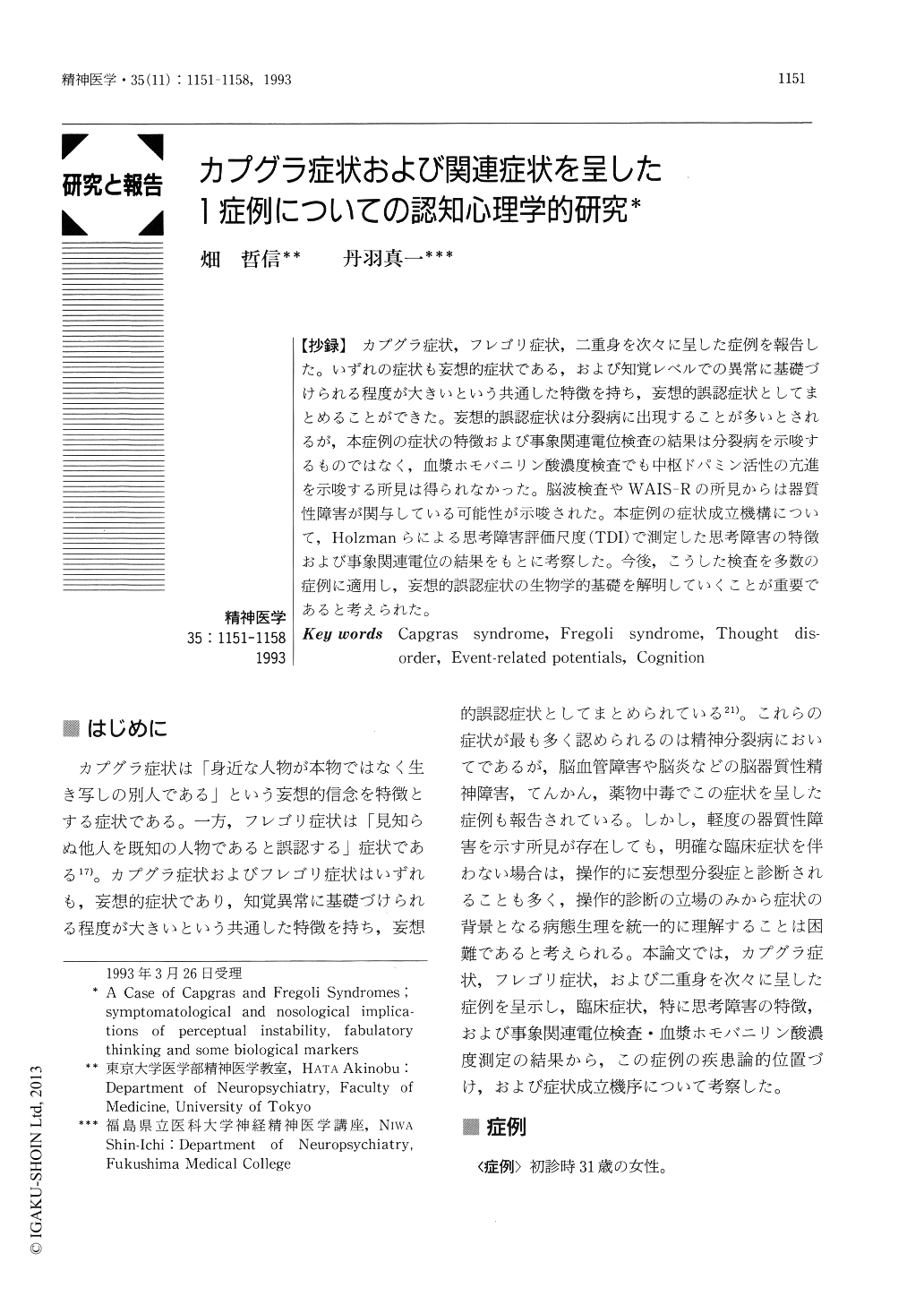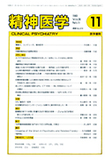Japanese
English
- 有料閲覧
- Abstract 文献概要
- 1ページ目 Look Inside
【抄録】 カプグラ症状,フレゴリ症状,二重身を次々に呈した症例を報告した。いずれの症状も妄想的症状である,および知覚レベルでの異常に基礎づけられる程度が大きいという共通した特徴を持ち,妄想的誤認症状としてまとめることができた。妄想的誤認症状は分裂病に出現することが多いとされるが,本症例の症状の特徴および事象関連電位検査の結果は分裂病を示唆するものではなく,血漿ホモバニリン酸濃度検査でも中枢ドパミン活性の亢進を示唆する所見は得られなかった。脳波検査やWAIS-Rの所見からは器質性障害が関与している可能性が示唆された。本症例の症状成立機構について,Holzmanらによる思考障害評価尺度(TDI)で測定した思考障害の特徴および事象関連電位の結果をもとに考察した。今後,こうした検査を多数の症例に適用し,妄想的誤認症状の生物学的基礎を解明していくことが重要であると考えられた。
A female case is reported who successively showed Capgras syndrome, Fregoli syndrome, and the symptom of subjective double. They had common features in that they are delusional symptoms depending largely on perceptual deteriorations. Therefore, they were categorized in a broad concept of delusional misidentification syndrome. We studied the cognitive psychological mechanism of this patient with particular reference to symptom production and nosological classification. Her symptomatic characteristics and ERP measures did not lend support to the diagnosis of schizophrenia. Also her plasma homovanillic acid levels showed no elevation of dopaminergic function. Furthermore, her EEG records and WAIS-R subtest profiles suggested some organic factors contributing to the cause of her illness. We assessed her cognitive problems utilizing the Holzman's “Thought Disorder Index (TDI)”. She exhibited high scores for categories of perceptual instability and fabulatory thinking. We speculated that such types of thought disorders are implicated in production of the delusional misidentification syndrome. Finally, it is suggested that further examination of cognitive distortions using such measures as employed in the present study will facilitate our symptomatological and nosological understanding of the delusional misidentification syndromes.

Copyright © 1993, Igaku-Shoin Ltd. All rights reserved.


